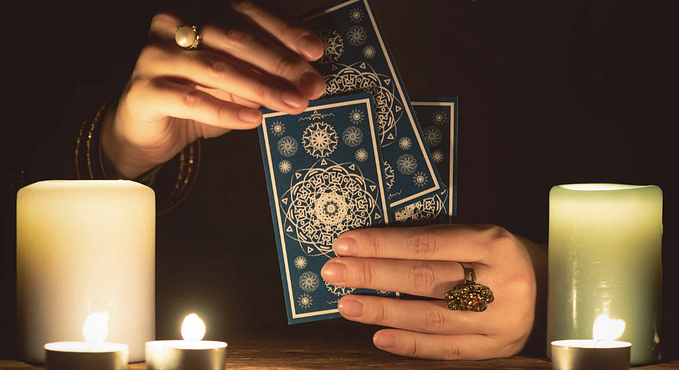4 Effective Ways to Allow Yourself to Be Vulnerable and Build Deeper Connections

Embracing vulnerability can be incredibly challenging, especially if you’re not naturally open with others. Yet, vulnerability is an essential aspect of building close, meaningful relationships. Being vulnerable means allowing yourself to be seen fully, with all your emotions, fears, and flaws, which can feel risky. People who struggle with vulnerability often have deep-rooted trust issues, possibly stemming from past traumas or painful experiences. They may even feel as though no one will understand or that others might take advantage of their openness.
In reality, vulnerability is a source of strength and personal growth. When you allow yourself to be open, you invite others into your world, creating trust and intimacy. Relationships — whether friendships, familial bonds, or romantic connections — thrive when people feel safe to be themselves without fear of judgment. Here, we’ll explore how past traumas impact vulnerability, why allowing yourself to be open is essential, and the top ways to let your guard down in a safe and gradual way.
How Past Traumas Affect Vulnerability
People often guard themselves because of painful memories and unresolved traumas. Trauma doesn’t have to stem from a major life event; it can come from seemingly minor instances that left a lasting impression. For example, an offhand comment from a family member in childhood can stay with someone for years, subtly shaping how they relate to others. Unfortunately, trauma tends to stifle vulnerability, making people fearful of sharing too much, lest they experience the same pain again.
Over time, people build defenses around these old wounds, using coping mechanisms to protect themselves. While these mechanisms may have been helpful during earlier years, they can become restrictive as adults, preventing people from fully experiencing joy, love, and trust. For many, these protective strategies become habitual, but as adults, we can learn new, healthier ways to approach vulnerability.
Why Vulnerability is Important for Growth
Some people view vulnerability as a weakness. They may fear judgment or feel that it exposes their insecurities. But vulnerability actually takes courage and strength. It’s a conscious choice to be authentic and honest, allowing others to see you as you are, imperfections and all. This openness is the bedrock of trust and intimacy.
By letting go of these defenses and practicing vulnerability, you gain a newfound sense of freedom. You no longer need to keep up an emotional guard or pretend to be someone else, which is an exhausting way to live. Vulnerability also leads to stronger relationships. When you open up, it invites others to do the same, creating a connection based on mutual trust and understanding. True relationships, the kind that bring joy and security, require openness and trust, which only come when you’re willing to show your authentic self.
4 Powerful Ways to Allow Yourself to Be Vulnerable
Embracing vulnerability is a journey, and it’s perfectly okay to take it slow. Each step helps you break down your walls and develop deeper connections with others. Here are some practical and meaningful ways to allow yourself to be vulnerable.
1. Explore Your Creativity
Creativity is one of the best ways to tap into your vulnerable side. Creative expression, whether through art, writing, music, or any other medium, is deeply personal. It requires you to explore your inner world, your feelings, and your unique perspective on life, which is a form of vulnerability.
Taking a painting class, signing up for a one-night pottery workshop, or even trying your hand at poetry can be liberating. Creativity has no right or wrong, so it’s a safe space for self-expression. Art classes or open mic events offer supportive, low-pressure environments where others encourage and respect your creative expression, no matter your skill level. Additionally, creative events often attract compassionate, open-minded individuals who are there to express themselves, making it easier to open up.
Example: Imagine you’re attending a painting and wine night. The instructor asks everyone to interpret a theme. You find yourself painting something that symbolizes an important memory. When others ask about it, you share the story. This simple act of expressing and sharing an experience opens a door to vulnerability, giving you the confidence to reveal more over time.
2. Use Writing as a Tool for Self-Expression
Writing offers a private, introspective way to explore vulnerability. Putting your feelings and thoughts on paper allows you to understand your emotions better, and it also helps you practice articulating them. Whether it’s journaling, writing a letter you never send, or drafting a short story or poem, writing can be a powerful first step toward letting others see your authentic self.
If you feel ready, share your writing with a close friend. They don’t need to analyze it, just be there to listen as you share a part of your inner world. Writing allows you to communicate deeply personal thoughts and emotions that you may not express in conversation, paving the way for greater openness in your relationships.
Example: You might write a poem about a recent experience that made you feel vulnerable. When you share it with a trusted friend, you might find that they relate to your feelings, which can lead to a meaningful conversation. This process helps you realize that vulnerability doesn’t always result in judgment; it can also bring validation and understanding.
3. Initiate Social Activities
Initiating social interactions may seem simple, but for those who struggle with vulnerability, it can be one of the hardest steps. Many people avoid initiating plans because they fear rejection or worry they’re imposing on others. However, initiating activities, even something as casual as inviting a friend for coffee, can help you overcome these fears.
Reaching out to others is a sign of openness and interest in building connections, which fosters vulnerability. Start by making plans with close friends or family members. As your comfort grows, consider inviting newer acquaintances out as well. This not only builds confidence but helps you learn that people are generally receptive to genuine connection.
Example: Let’s say you’re new to a city and want to make friends. Instead of waiting for others to approach you, you invite a colleague out for lunch. They accept, and over the meal, you share a bit about yourself, asking them about their own experiences in the city. Taking the initiative shows your willingness to connect, and it can be the first step in building new friendships.
4. Avoid Comparison and Embrace Your Own Journey
One of the biggest barriers to vulnerability is comparison. In today’s world, it’s easy to feel like everyone else has it all figured out, especially when social media often portrays a flawless version of others’ lives. When you compare yourself to others, you’re more likely to hide your true self, thinking that your imperfections don’t measure up.
Remember, everyone faces challenges and insecurities, no matter how perfect their life may seem. By focusing on your own journey and accomplishments, rather than comparing yourself to others, you give yourself permission to be authentic. Embrace your unique path and practice self-compassion. Vulnerability doesn’t mean you have to be flawless; it means you’re willing to be seen as you are.
Example: Instead of scrolling through social media and feeling inadequate, use that time to reflect on your personal growth. Recognize what you’ve accomplished and how you’ve overcome past challenges. By focusing on your own life and appreciating your journey, you’ll feel more comfortable sharing your experiences with others.
5. Take a Risk and Share Something Meaningful
The best way to build trust and vulnerability is to take small risks by sharing meaningful parts of yourself with others. You don’t have to share your deepest secrets right away, but choose someone you trust and share a piece of your story. This could be a personal goal, a challenge you’re facing, or an experience that shaped you.
Let the person know you’re working on being more open and that this is a big step for you. Most people respond positively to vulnerability, often reciprocating by sharing their own experiences. Taking this risk not only strengthens your connection but also shows you that sharing doesn’t always result in negative outcomes.
Example: You might open up to a friend about a recent challenge at work. Explain that you’ve been struggling with it, and ask for their perspective. This can deepen your friendship, as they’re likely to appreciate your openness and may feel comfortable sharing their own experiences with you.
Final Thoughts
Learning to be vulnerable is a journey that requires patience, practice, and self-compassion. Past trauma can create barriers to vulnerability, but by taking small steps, you can break down these walls and allow others to see the real you. Vulnerability is an act of courage, and while it can feel uncomfortable at times, it’s essential for building authentic relationships and connecting on a deeper level.
Allowing yourself to be vulnerable isn’t about sharing every detail of your life with everyone. It’s about being authentic and open in a way that feels safe and genuine. Start small, stay true to yourself, and recognize that vulnerability doesn’t weaken you; it makes you stronger. With time and practice, you’ll find that being open enriches your relationships and brings you closer to the love, trust, and connection we all need.










